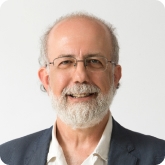- Professor
- Emeritus Professor
- Joint Professor
- Adjunct Professor
- Invited Professors
- Research Professor
Professor Yannis, Semertzidis (야니스)
2014.12.15 15:46
-

-
Position: ProfessorTel&office No: +82-42-350-2522E-mail: yannis(at)kaist.ac.krHomepage: http://capp.ibs.re.kr/html/capp_en/ResearchField: Elementary Particle Physics and Particle Astrophysics
Educations
-
1990 University of Rochester/USA (Ph.D. in Physics)
-
1987 University of Rochester/USA (M.A. in Physics)
-
1985 Aristotle University of Thessaloniki/Greece (B.Sc. in Physics)
Experiences
-
2013~Present Director of the Center for Axion and Precision Physics Research (CAPP) of IBS/
Professor of Physics, KAIST -
2012 Senior Scientist with Tenure, Department of Physics, BNL.
-
2000~Present Tenured Physicist at BNL.
-
1997~2000 Physicist, Department of Physics, BNL
-
1995-1997 Associate Physicist, Department of Physics, BNL.
-
1993-1995 Fellow, PPE Division, CERN (European Organization for Nuclear Research, Switzerland).
-
1992-1995 Assistant Physicist, Department of Physics, Brookhaven National Laboratory (BNL), Upton, NY USA.
-
1990-1992 Research Associate in Physics, University of Rochester
LAB
Center for Axion and Precision Physics Research (CAPP)
The Center for Axion and Precision Physics Research (CAPP) is funded by the Institute for Basic Science (IBS) in Korea. CAPP is located in Daejeon City at the Munji Campus of the Korea Advanced Institute of Science and Technology (KAIST). Our center aims to launch a state of the art axion dark matter experiment. CAPP will also play a leading role in the proton electric dipole moment experiment and will participate in other axion, DM, EDM, muon g-2 experiments around the world.
The latest measurements indicate that dark matter constitutes about 27% of the energy in the universe. Among the leading dark matter candidates are particles such as axions, and weakly interacting massive particles (WIMPs), e.g., the lightest super-symmetric particle. (WIMP searches are the subject of several groups around the world including the IBS center CUP in Korea.) Axions were postulated to solve an embarrassing problem in strong interactions: even though the theory of strong interactions predicts a large violation of certain symmetries (P-parity and T-time reversal), the limit on the electric dipole moment (EDM) of the neutron is already too small, some ten orders of magnitude smaller than expected.
A massive axion is excluded by several experiments and astrophysical limits. A prominent Korean theorist prof. Jihn E. Kim suggested that a light-mass axion would also work as well. The light axions have to advantage that they could constitute the dark matter of our universe. It is currently believed that axion masses between 10-3meV and 1meV could be ideal dark matter candidates. Depending on their mass, there could be about 1014axions/cm3, to fill the dark matter density quota of about 0.3GeV/cm3.
The IBS Center for Axion and Precision Physics Research will explore the dark-matter axion. Our first aim is to use a method suggested by Prof. P. Sikivie, to convert the axions into microwave photons inside a large volume, high magnetic field, and a high quality microwave cavity. We are also exploring different geometries that can prove to be advantageous. The axion microwave experiment is going to be launched at the KAIST campus site-using top of the line equipment and technology. The expected conversion rate is very small, of order 10-23W, making it the faintest signal possible in a realistic experiment.
Once the axions are discovered, a new physics field, axion astrophysics, may be launched, opening new horizons in our knowledge of the universe and its dark-matter dynamics.
In addition, the center is going to play a leading role in the storage ring proton EDM experiment to improve the sensitivity by several orders of magnitude down to 10-29ecm, making it the best hadronic EDM experiment in the world. A successful proton EDM experiment could help explain the matter-antimatter asymmetry mystery of our universe.







